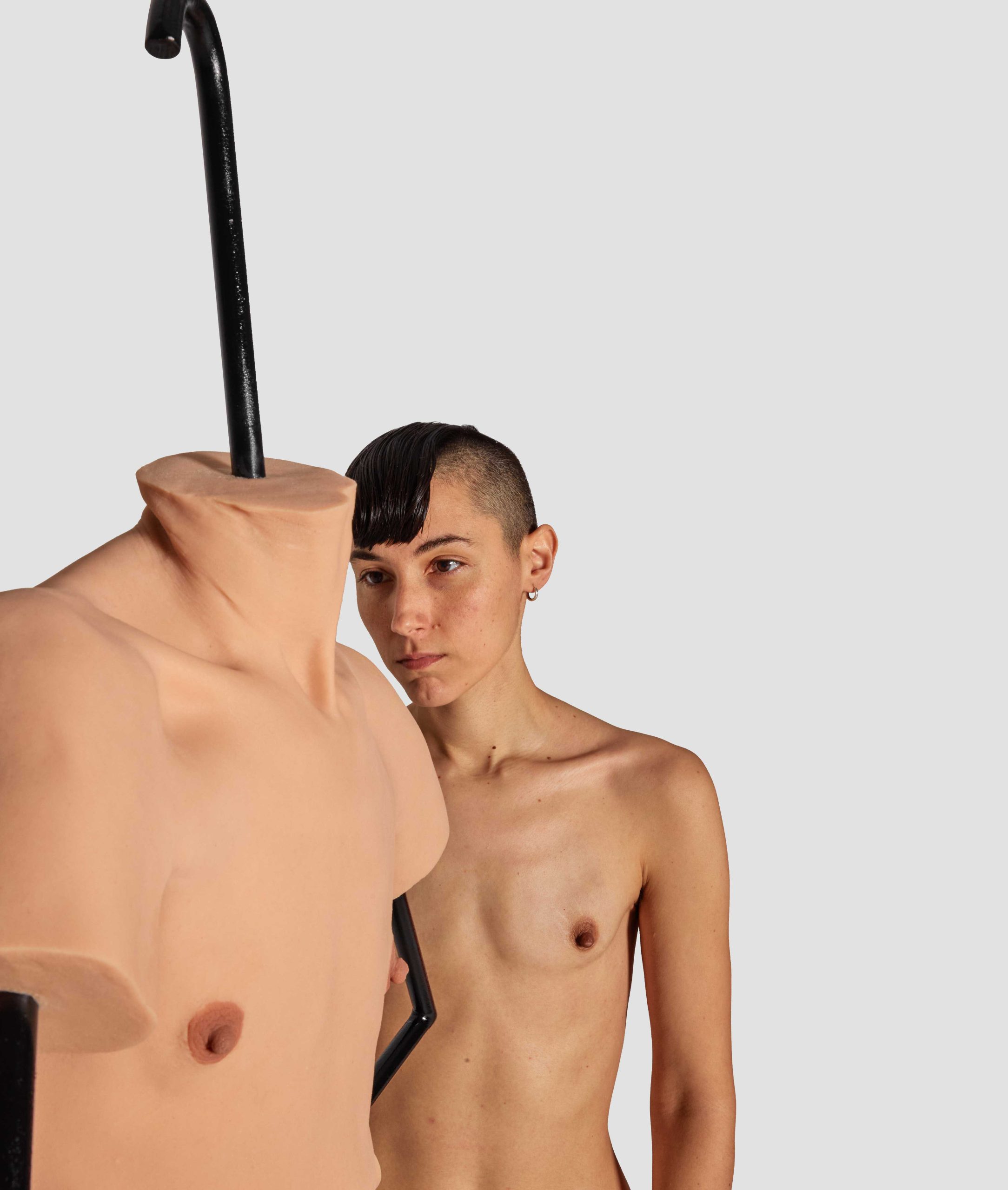The fashion industry has progressively evolved into a house of mirrors. It forces the collective to analyse their reflection and confront each imperfection with the urgency of the climate crisis upon their shoulders. However, mirrors are just as much a reflection of the present as they are of the past, and it seems now more than ever we’re delving back in time to retrieve the sacred blueprints for our future. Experts in the fields of Material Science, Biology, Chemistry, Engineering and Textile Craft are converging with the aim of producing the next generation of materials using microorganisms, 100% renewable energy and microstructures. These crucial collaborations are responsible for the reformation of not just the fashion industry, but an array of historically destructive industries. With major fashion houses already on board, will we be seeing a mass eradication of toxic, ruinous textiles?
Leather goods are phenomenally sought-after and regrettably come with an assemblage of environmental issues. Rather than become a solution to the pernicious nature of leather, vegan leather continued and contributed to the problem in an extensively dishonest way. According to an analysis report by Grand View Research,
“The Global leather goods market size was valued at USD 242.85 billion in 2022 and is expected to expand at a compound annual growth rate (CAGR) of 6.6% from 2023 to 2030.”
Mushroom Leather
At the forefront of this battle is researcher and entrepreneur, Dan Widmaier. With a bachelor’s degree in Biochemistry from the University of Washington and a PhD in Chemistry and Chemical Biology from the University of California, Widmaier created Bolt Threads. The company, founded in 2010 by Widmaier who now acts as CEO, is described as a solutions based company. Utilising his scientific background, Widmaier has led the way in producing materials such as silk and leather using biomaterials. A tie made entirely from spider silk was the first product produced by Bolt Threads which was inspired by none other than Spider Man’s web slinger. The project was stellar enough to impress the likes of Stan Lee who personally contacted Dan Widmaier to marvel over the spellbinding technology. But Bolt Threads didn’t stop at spider silk. Noticing both the impact of leather goods and their popularity, Widmaier analysed the microstructure of the collagen in cowhide and began trying to find a naturally sourced replica. His research led him to funghi, in particular mycelium (a root-like structure of a fungus made of a multitude of strands). Mycelium are like the roots of a plant that absorb surrounding nutrients. Mycelium eat lamented matter in the soil and provide not only the mushroom nutrients, but the local ecosystem. Mycelium turned out to be a decent match to the microscopic image of cowhide collagen and from there they began growing rows of it in a lab. Growing and harvesting mycelium was half the battle, the other half involved creating thousands of iterations before settling on ‘Mylo’. In his 2022 TED talk entitled, ‘The Future of Fashion – made from mushrooms’, Widmaier explained that Mylo is grown in a “high-density vertical agriculture and powered with 100 percent renewable energy.” Brands like Stella McCartney, lululemon, Kering and Adidas agreed to use Mylo in their collections and thus ridded the need for continual use of leather and vegan leather textiles.
Bioplastic
Another innovator exploring the growth of biomaterials is Charlotte McCurdy, whose award-winning designs and research have shed light on the possibility of a carbon-negative future in the fashion industry. McCurdy made waves by designing an algae bioplastic, carbon-negative raincoat composed of biopolymers derived from algae. In an interview with Dezeen, McCurdy detailed how she achieved a carbon-negative design stating, “The Jacket is carbon-negative because it is made of marine macro-algae that expands our ability to meet our needs with ‘present-tense sunlight’,”
McCurdy’s ingenious design led her to work with the Slow Factory Foundation (a partnership of scientists, designers and global experts fighting for environmental justice and human rights). In 2020, Slow Factory launched the One X One Program, described as “the first science incubator redesigning fashion.” Through this program, Charlotte McCurdy was partnered with designer Phillip Lim to expand on the algae bioplastic concept. Their collaborative efforts resulted in a petroleum free dress adorned with bioplastic sequins. Even the base of the dress in which the sequins are sewn to is made of plant fibers. McCurdy and Lim’s partnership is just one of many at Slow Factory, with their goal to continue partnering designers and scientists in order to make the seemingly impossible, possible. As a collective they’ve coined their ‘Three Pillars of Sustainability’, which are ‘Circularity, Equity Centered Design and Regenerative Technologies.’ Their efforts are changing the face of the fashion industry one step at a time.
If scientists and designers are providing the solution to a sustainable future in fashion, who are the people ensuring that these ideas make it into the dominant fashion houses? Meet the global Luxury group, Kering. Kering has made it their mission to align Luxury brands with an ethical and sustainable vision. They’ve become the keystone in fashioning a tangible pathway for change and are also creating sustainable versions of the textiles enjoyed globally. In 2013, Kering launched their Material Innovation Lab, “dedicated to sourcing sustainable materials and fabrics”. The Lab, located in Milan, is responsible for sustainable solutions such as;
Black Eco-Pigment – “obtained from the by-product of industrial production of spirulina algae”. With a negative carbon footprint and UV-light exposure resistance, this pigment is a safe and environmentally friendly dupe to regular Black Pigment.
Faux Fur – “made of Sorona, a polyester-like fiber that is partially bio-based.”
Kering have additionally expressed their alignment with Animal Welfare Standards. In 2014, Kering partnered with the Wildlife Conservation Society to assist breeders in refining their breeding processes for goats. Through their involvement with farms around the world, Kering have produced South Gobi Cashmere, a fully traceable and sustainable cashmere, and 100% Traceable Mohair, from farms in South Africa that comply with ‘Mohair South Africa Sustainable Guidelines.’
Kering invested in biotech company VitroLabs in 2022, another lab producing environmentally friendly leather. In a press release dated July 27, 2023, Kering outlined their ‘First-Half 2023 Results’. Chairman and Chief Executive Officer, François-Henri Pinault described:
“In the first half, we pursued our investments in our Houses’ desirability and exclusivity. While engaging in critical forward-looking initiatives, we maintained a high level of profitability. We also took some decisive steps to expand our footprint in the luxury universe, notably with the acquisition of the famed Creed fragrance house to accelerate the liftoff of Kering Beauté. Together with the major organizational changes we announced last week to enhance stewardship of our Houses, as well as the many projects we have already launched over the past few months, the developments of the first half strengthen my confidence in Kering’s future prospects.”
François-Henri Pinault, Chairman and Chief Executive Officer
Kering’s revenue in the first half of 2023 increased by 2%, totalling €10.1 billion
The growth of biomaterials is irrepressible. Every day there are new discoveries, new procedures and new prospects to be shared and there is no lack of scientists, designers and engineers devoting their entire careers to this cause. Researcher and designer Uyen Tran made the 2022 30 under 30 by co-founding TômTex, a company manufacturing “100% bio-based leather made from seafood shells and mushroom waste”. Modern Synthesis, a company founded by CEO Jen Keane is using Nanocellulose Fibers in order to reinvent previously problematic materials. Research professor and Director Merja Penttilä has studied the use of microbes in developing biomaterials. In an article by the Academy of Finland she explains,
“By means of gene technology, we can modify microbial metabolism and thereby produce organic acids for a wide range of industrial applications. They can be used, among other things, for manufacturing new plastic and textile materials, or packaging technologies,” Merja Penttilä, Research Professor and Director of the Centre of Excellence from VTT Technical Research Centre of Finland
The development of biomaterials stands as a prime example of nature providing all the answers we need to solve some of the most critical challenges facing us today. Glitch is interested to see which materials will begin to fill our shops and wardrobes in the next few years? The journey towards sustainability is long and arduous, but the progress made through exploring the science of nature is inarguable and astonishing.
Written by Ashley Jade Callahan from GLITCH Magazine





